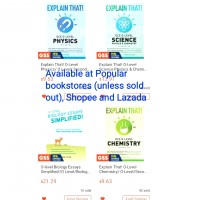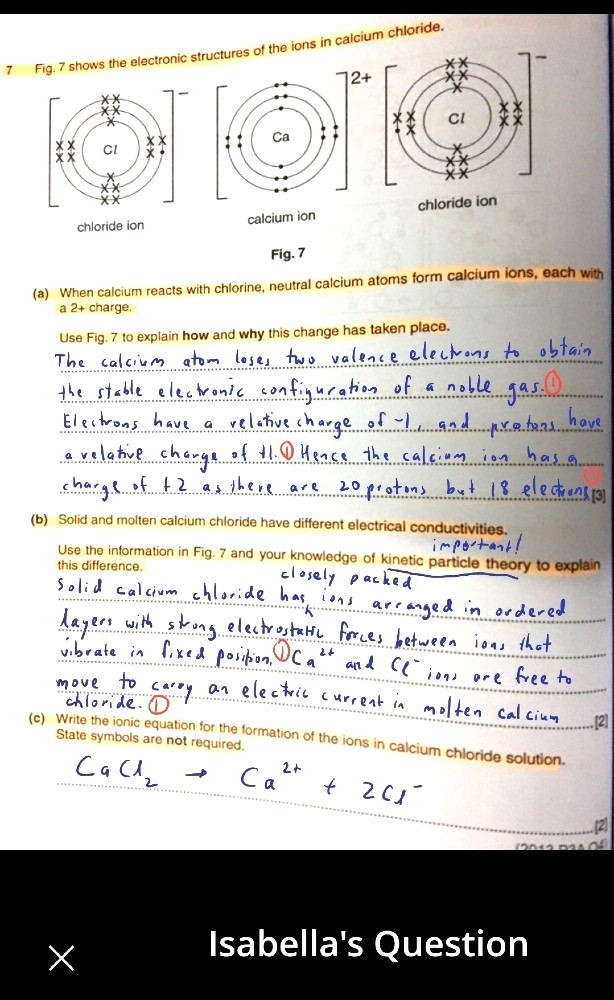Ask Singapore Homework?
Upload a photo of a Singapore homework and someone will email you the solution for free.

Question
secondary 3 | Biology
One Answer Below
Anyone can contribute an answer, even non-tutors.

Unsure of how to answer
------------
A calcium atom becomes an ion by giving away its two valence electrons while a chlorine atom becomes an ion by gaining one electron. In both cases, the new ions formed possess fully occupied outer shell.
------------
When calcium reacts with chlorine, calcium donates its two valence electrons to two chlorine atoms, each of which accepts one electron each, in order for all three atoms to achieve a stable octet electronic configuration. In doing so, the charge on the calcium obtains a charge of +2, since two electrons with charge of -1 each are lost.
------------
(b) We see in Fig 7 that calcium and chlorine have both formed ions upon reaction with each other to form an ionic compound consisting of a calcium atom and two chlorine atoms.
------------
In solid state, the ions are stuck together in a fixed lattice structure (since the electrostatic forces of attraction between the oppositely charged ions are very strong). This results in the absence of free moving ions required for charges to move around for electrical conduction. Hence, solid calcium chloride has poor electrical conductivity.
------------
In molten state, the particles are now sliding past one another and are able to move around. This results in a flow of ions and thus charges can be carried around for electrical conduction. Hence, molten calcium chloride has good electrical conductivity.
------------
(c) Ca2+ + 2 Cl- --> CaCl2
See 1 Answer

Explain That! Chemistry
- found under Secondary Guides at Popular Bookstores (except smaller branches, due to limited shelf space).




